The long awaited response to the 2021 UN Convention of Parties on Climate in Glasgow, Scotland
While there are numerous topics from COP26 that deserve attention, for the purposes of this blog I will be focusing on the Glasgow Leaders’ Declaration on Forests and Land Use, particularly within an Irish context. Forests pertain to multiple elements of climate change; not only are they home to a huge number of animal and plant species, they also act as carbon sinks for greenhouse gas mitigation. Deforestation is a key area to tackle climate change impacts, as the destruction of forests contributes to a large percentage of greenhouse gas emissions (around 15% according to WWF). Additionally, deforestation causes changes in the water cycle and precipitation levels, as well as contributing to soil erosion.

The Glasgow Leaders’ Declaration on Forest and Land Use urges countries and leaders to move towards a sustainable land use tradition, recognizing it is necessary in order to keep to the Paris Agreement targets and goals within reach. This was one of the first agreements to come out of COP26, and acknowledges the importance of forest and other terrestrial ecosystems as key aspects for conserving biodiversity and mitigating GHG emissions. There are 3,691,510,640 hectares of forest covered within the 141 countries included in the declaration, including Ireland, and the declaration covers 6 main points as follows:
- Conserve forests and other terrestrial ecosystems and accelerate their restoration;
- Facilitate trade and development policies, internationally and domestically, that promote sustainable development, and sustainable commodity production and consumption, that work to countries’ mutual benefit, and that do not drive deforestation and land degradation;
- Reduce vulnerability, build resilience and enhance rural livelihoods, including through empowering communities, the development of profitable, sustainable agriculture, and recognition of the multiple values of forests, while recognising the rights of Indigenous Peoples, as well as local communities, in accordance with relevant national legislation and international instruments, as appropriate;
- Implement and, if necessary, redesign agricultural policies and programmes to incentivise sustainable agriculture, promote food security, and benefit the environment;
- Reaffirm international financial commitments and significantly increase finance and investment from a wide variety of public and private sources, while also improving its effectiveness and accessibility, to enable sustainable agriculture, sustainable forest management, forest conservation and restoration, and support for Indigenous Peoples and local communities;
- Facilitate the alignment of financial flows with international goals to reverse forest loss and degradation, while ensuring robust policies and systems are in place to accelerate the transition to an economy that is resilient and advances forest, sustainable land use, biodiversity and climate goals.
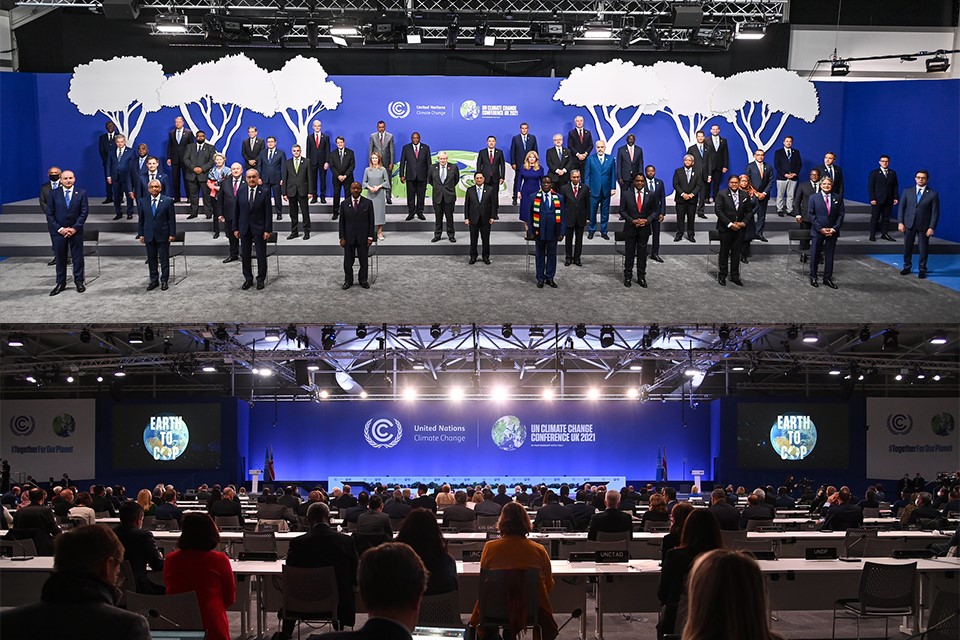
[We] recognise that to meet our land use, climate, biodiversity and sustainable development goals, both globally and nationally, will require transformative further action in the interconnected areas of sustainable production and consumption; infrastructure development; trade; finance and investment; and support for smallholders, Indigenous Peoples, and local communities, who depend on forests for their livelihoods and have a key role in their stewardship…
We urge all leaders to join forces in a sustainable land use transition. This is essential to meeting the Paris Agreement goals, including reducing vulnerability to the impacts of climate change and holding the increase in the global average temperature to well below 2°C and pursuing efforts to limit it to 1.5°C, noting that the science shows further acceleration of efforts is needed if we are to collectively keep 1.5°C within reach. Together we can succeed in fighting climate change, delivering resilient and inclusive growth, and halting and reversing forest loss and land degradation.
GLASGOW LEADERS’ DECLARATION ON FORESTS AND LAND USE, 12th November 2021 (6pm)
This is not the first agreement of its kind, but the range of countries involved is significant as it includes countries that are major contributors to deforestation, such as Brazil, China, Russia, and the United States of America. However, there is not yet promising policy infrastructure to ensure the reduction, let alone the reversal, of deforestation. The national actions of countries are incredibly important in order to uphold these sweeping declarations; for example in Brazil, Bolsonaro has been notorious for publicly advocating in favor of loggers and other groups that illegally exploit the Amazon’s resources, and undermine Indigenous peoples’ rights over their lands, which include protected forests in the Amazon. Ireland is one of the least forested areas in Europe, and commercial forestry company Coillte controls 7% of Ireland’s land, making up over 440,000 hectares of forest, and is well known for their non-native Sitka Spruce plantations The nonprofit branch of the company, Coillte Nature cites their four main strategies to address deforestation as follows:
- Afforesting our landscapes by planting new native woodlands on un-forested land
- Restoring important biodiversity areas by investing in major habitat improvements
- Regenerating urban forests for the benefit of people and nature
- Rehabilitating ecosystem services by bringing sensitive or degraded lands into better health
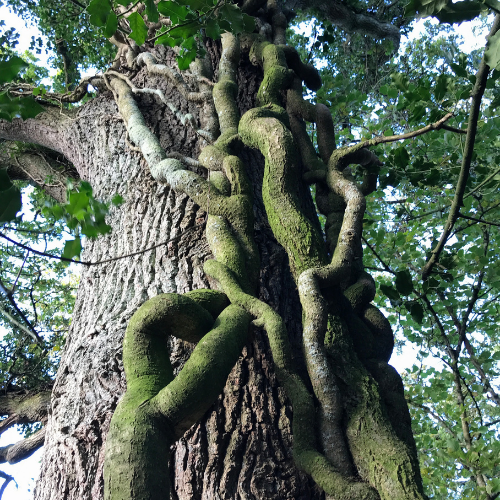
Other organizations, such as the Native Woodland Trust, are working to protect ancient and established woodlands, as well as work towards the restoration of Ireland’s original ecosystem through the re-creation of woodlands using only native seed. The Afforesting as laid out by Coillte is important for the establishment of new woodlands, but the protection of Ireland’s few precious established woodlands are essential for maintaining biodiversity. Traditional definitions of forests are not the only ‘woodland’ relevant within Ireland, however. Hedgerows cover about 4% or 689,000sq km within the country, and are underutilized within farms as they were previously excluded from Common Agricultural Policy (CAP) benefits. The carbon sequestration abilities of hedgerows within Ireland is understudied, and it is argued that guidelines should be added to the CAP for hedgerow growth and maintenance requirements to maximize their effectiveness on farms.
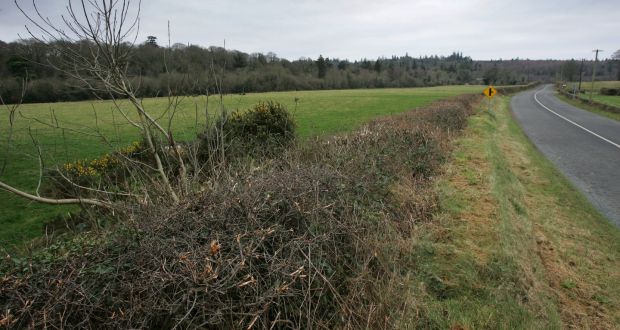
Additionally, the acknowledgement within the declaration of other terrestrial ecosystems, thinking specifically of peatlands and boglands, is significant to Ireland. Bogs also act as carbon sinks, and the disruption of these lands for afforestation purposes could contribute to greenhouse gas emissions rather than mitigation. However, there is a disconnect between the Leaders’ Declaration and national actions within Ireland. The Horticultural Peat (Temporary Measures) Bill 2021 proposed jointly by Fine Gael and Fianna Fáil would remove the current need for planning permission required for peat extraction, requiring only EPA licensing. If passed, the Bill would give a planning derogation for peat extraction for horticultural purposes until 2026 and potentially as far out as 2030, directly in opposition of meeting climate goals. It is clear that Ireland is not the only country with a disconnect between national policy and meeting global targets, and hopefully the commitment to reversing deforestation will be taken seriously at local and national levels.
This disconnect was seen throughout COP26 itself; As I’m sure you’re all aware from media coverage, this year’s Convention of Parties on Climate Change has been quite controversial. From the high carbon meals served at the summit itself, to the giant protests in response, COP26 has been named the ‘most exclusionary COP ever.’ Many of the sponsors of the event do not have great environmental track records, which is ironic considering these declarations and pledges to end coal use and deforestation, etc:
Large displays of governmental ‘commitments’ amidst hundreds of lobbyists for the fossil fuel industry and photo opportunities for celebrities reminded me of series of artwork by Isaac Cordal, which often depicts business men reaping the consequences of catastrophe that they themselves created. Below I have included a small selection of Cordal’s installations from his Follow the Leaders series, which include his figures half drowning in crude oil, conducting business as the tides are rising around them, and navigating the rubble of a city they destroyed.
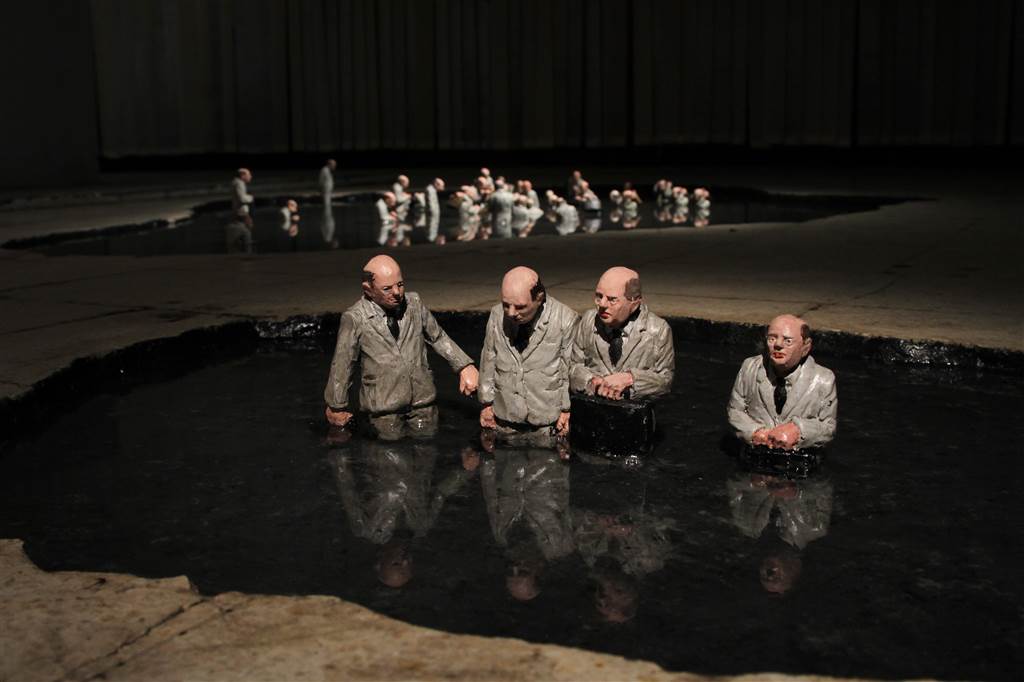
Brussels, 2016 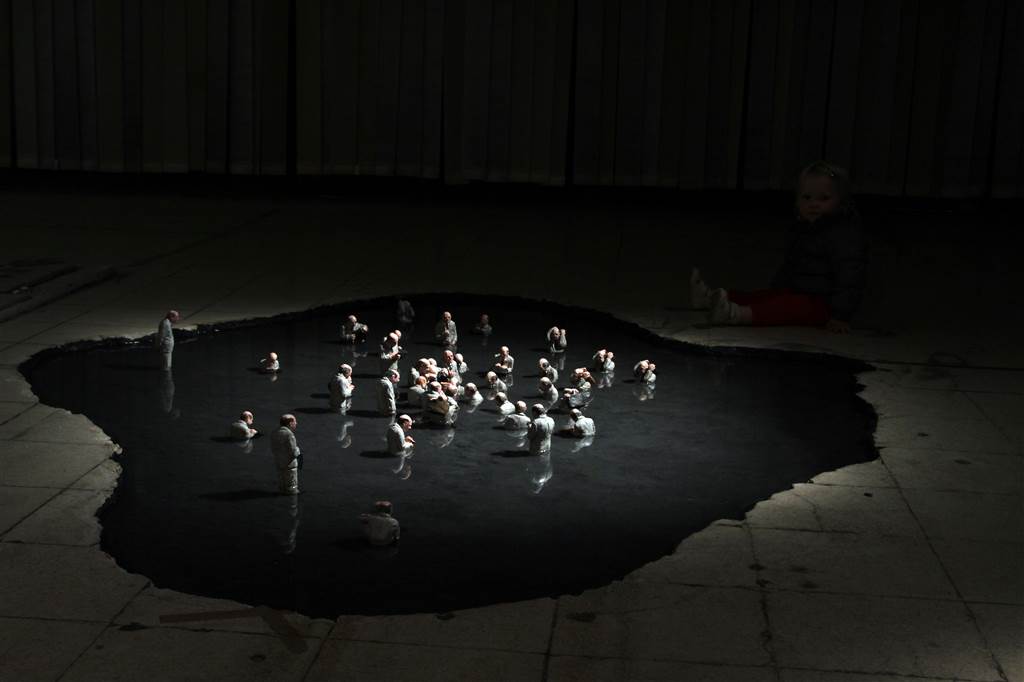
Brussels, 2016 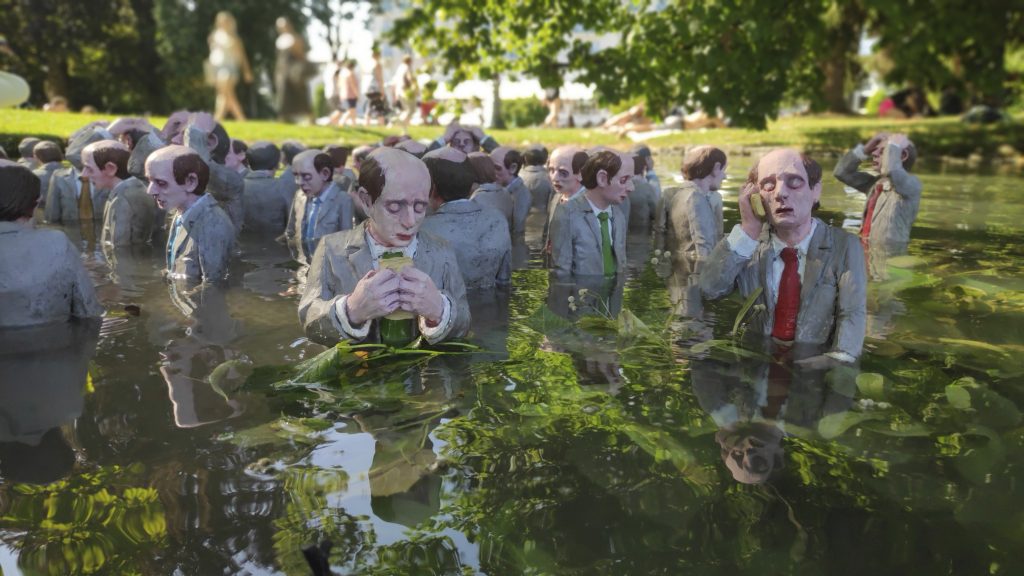
Annency, 2019 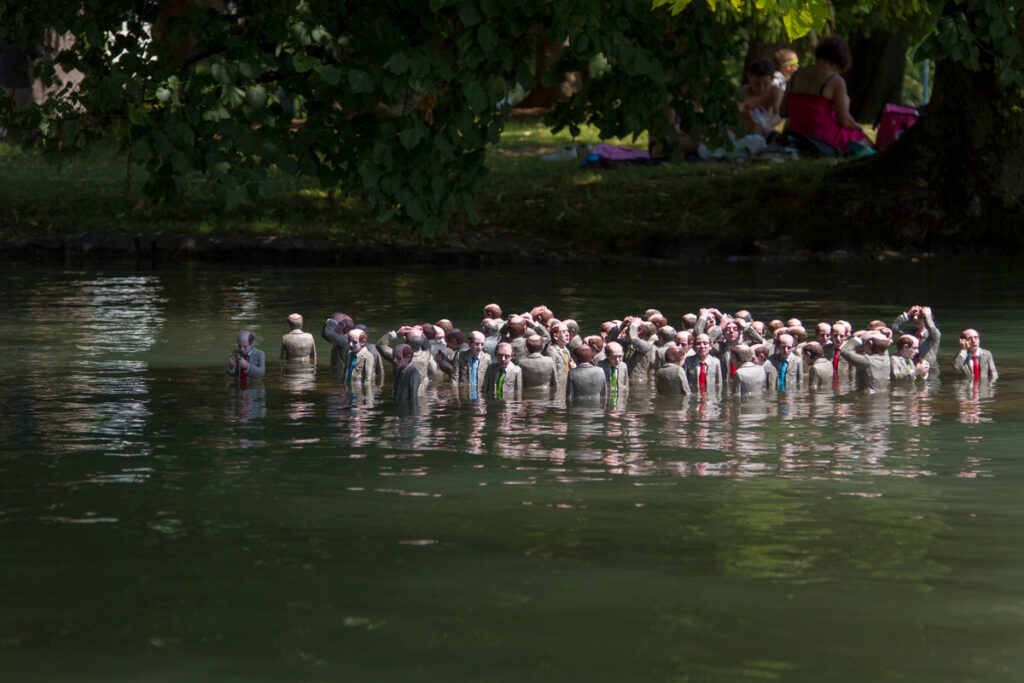
Annency, 2019 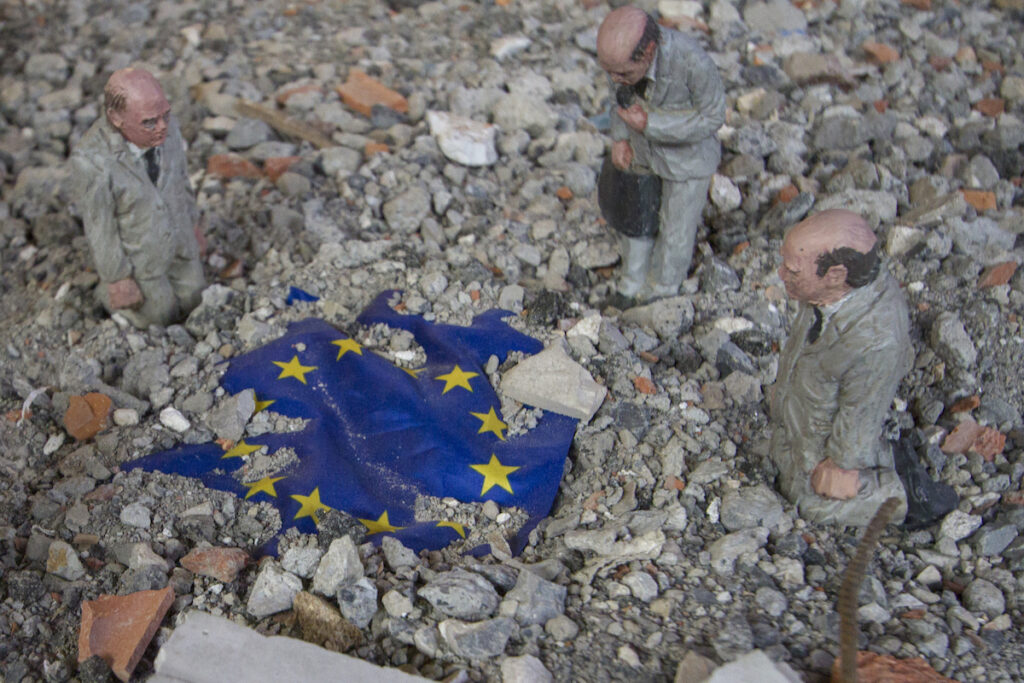
Bilbao, 2019 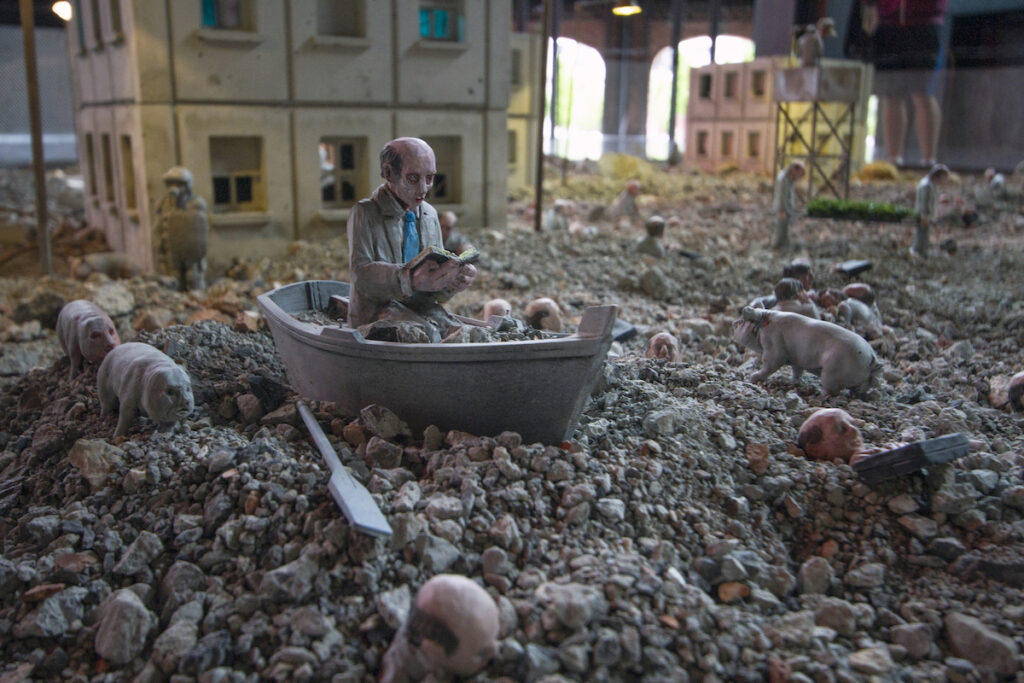
Bilbao, 2019
Follow the leaders is a critical reflection on our inertia as a social mass…a metaphor for the collapse of capitalism and the side effects of progress. Representing a social stereotype associated with power compound businessmen who run the global social spectrum.” – Isaac Cordal